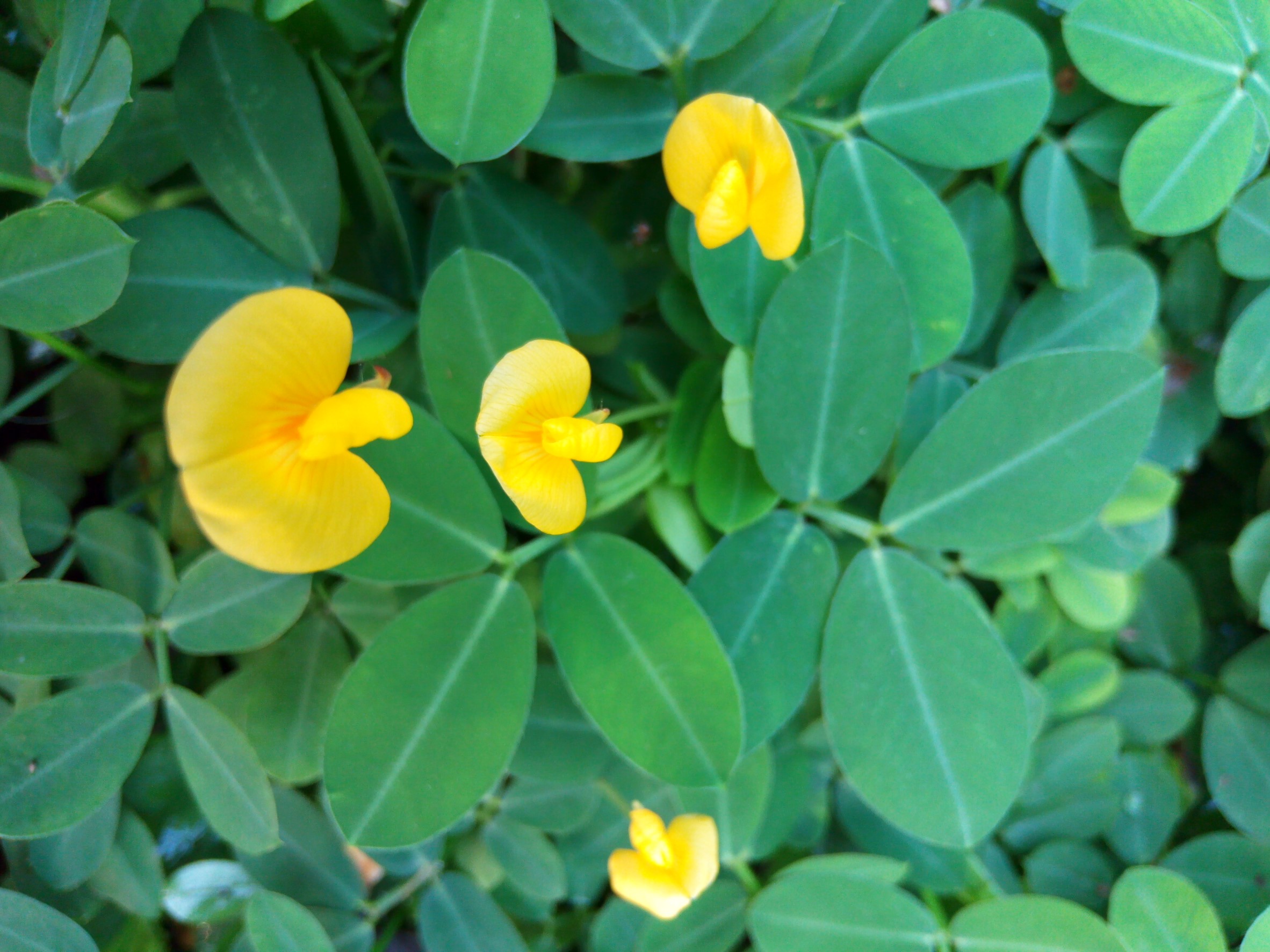Arachis Pintoi on:
[Wikipedia]
[Google]
[Amazon]
''Arachis pintoi'', the Pinto peanut, is a


EMBRAPA:''Arachis pintoi''
photo
Neotropical Herbarium Specimens
Biology and Agronomy of Forage Arachis edited by P.C. Kerridge & B. Hardy (1994)
pintoi Forages Flora of Brazil {{Dalbergieae-stub
forage
Forage is a plant material (mainly plant leaves and stems) eaten by grazing livestock. Historically, the term ''forage'' has meant only plants eaten by the animals directly as pasture, crop residue, or immature cereal crops, but it is also used m ...
plant native to Cerrado
The Cerrado () is a vast ecoregion of Tropics, tropical savanna in central Brazil, being present in the states of Goiás, Mato Grosso do Sul, Mato Grosso, Tocantins, Maranhão, Piauí, Bahia, Minas Gerais, São Paulo (state), São Paulo, Paraná ...
vegetation
Vegetation is an assemblage of plants and the ground cover they provide. It is a general term, without specific reference to particular Taxon, taxa, life forms, structure, Spatial ecology, spatial extent, or any other specific Botany, botanic ...
in Brazil
Brazil, officially the Federative Republic of Brazil, is the largest country in South America. It is the world's List of countries and dependencies by area, fifth-largest country by area and the List of countries and dependencies by population ...
. It is native to the valleys of the upper São Francisco and the Jequitinhonha
Jequitinhonha () is a Brazilian municipality located in the northeast of the state of Minas Gerais.
Geography
The population was estimated to be 25,474 people living in a total area of 3,518 km². The city belongs to the mesoregion of Jequ ...
rivers of Minas Gerais. It has been named after the Brazilian botanist Geraldo Pinto, who first collected the plant at the locality of Boca do Córrego, município de Belmonte (State of Bahia
Bahia () is one of the 26 Federative units of Brazil, states of Brazil, located in the Northeast Region, Brazil, Northeast Region of the country. It is the fourth-largest Brazilian state by population (after São Paulo (state), São Paulo, Mina ...
) in 1954 and suggested its potential as a forage. The species has been first described by A. Krapovickas and W. Gregory in 1994.
This wild perennial relative of the groundnut or peanut
The peanut (''Arachis hypogaea''), also known as the groundnut, goober (US), goober pea, pindar (US) or monkey nut (UK), is a legume crop grown mainly for its edible seeds. It is widely grown in the tropics and subtropics by small and large ...
, has been of increasing importance to pasture improvement in the tropics. Its stolon
In biology, a stolon ( from Latin ''wikt:stolo, stolō'', genitive ''stolōnis'' – "branch"), also known as a runner, is a horizontal connection between parts of an organism. It may be part of the organism, or of its skeleton. Typically, animal ...
iferous growth habit, subterranean seed production, high forage quality, and acceptability to grazing cattle are of particular value. It is widely used in tropical grazing systems for ruminant livestock. The most common cultivar
A cultivar is a kind of Horticulture, cultivated plant that people have selected for desired phenotypic trait, traits and which retains those traits when Plant propagation, propagated. Methods used to propagate cultivars include division, root a ...
was first released in 1989 as cv. 'Amarillo' in Australia
Australia, officially the Commonwealth of Australia, is a country comprising mainland Australia, the mainland of the Australia (continent), Australian continent, the island of Tasmania and list of islands of Australia, numerous smaller isl ...
. Subsequently, it was released as cv. 'Mani Forrajero Perenne' in Colombia
Colombia, officially the Republic of Colombia, is a country primarily located in South America with Insular region of Colombia, insular regions in North America. The Colombian mainland is bordered by the Caribbean Sea to the north, Venezuel ...
in 1992. It has been widely distributed in the tropics as accession CIAT 17434.
Description
Pinto peanut is a stoloniferous perennial creeping legume that can reach 20-50 cm in height and form dense swards. It is strongly tap-rooted and has many secondary nodulated roots. The stems are initially prostrate and then become ascendant. The leaves are tetrafoliolate. The leaflets are oblong-obovate to obovate in shape, 4.5 cm long x 3.5 cm broad, glabrous and darker green at their upper side and pubescent underneath. The flowers are yellow, borne on short axillary racemes and very similar to groundnut flowers but smaller. Like groundnut, once pollinated, the flower stalks elongate and grow down into the soil, penetrating up to a depth of about 7 cm. The fruit is a terminal underground, one-seeded pod, 1-1.5 cm long and 6-8 mm in diameter. It is found in the upper 10 cm of the soil.

References
External links
EMBRAPA:''Arachis pintoi''
photo
Neotropical Herbarium Specimens
Biology and Agronomy of Forage Arachis edited by P.C. Kerridge & B. Hardy (1994)
pintoi Forages Flora of Brazil {{Dalbergieae-stub